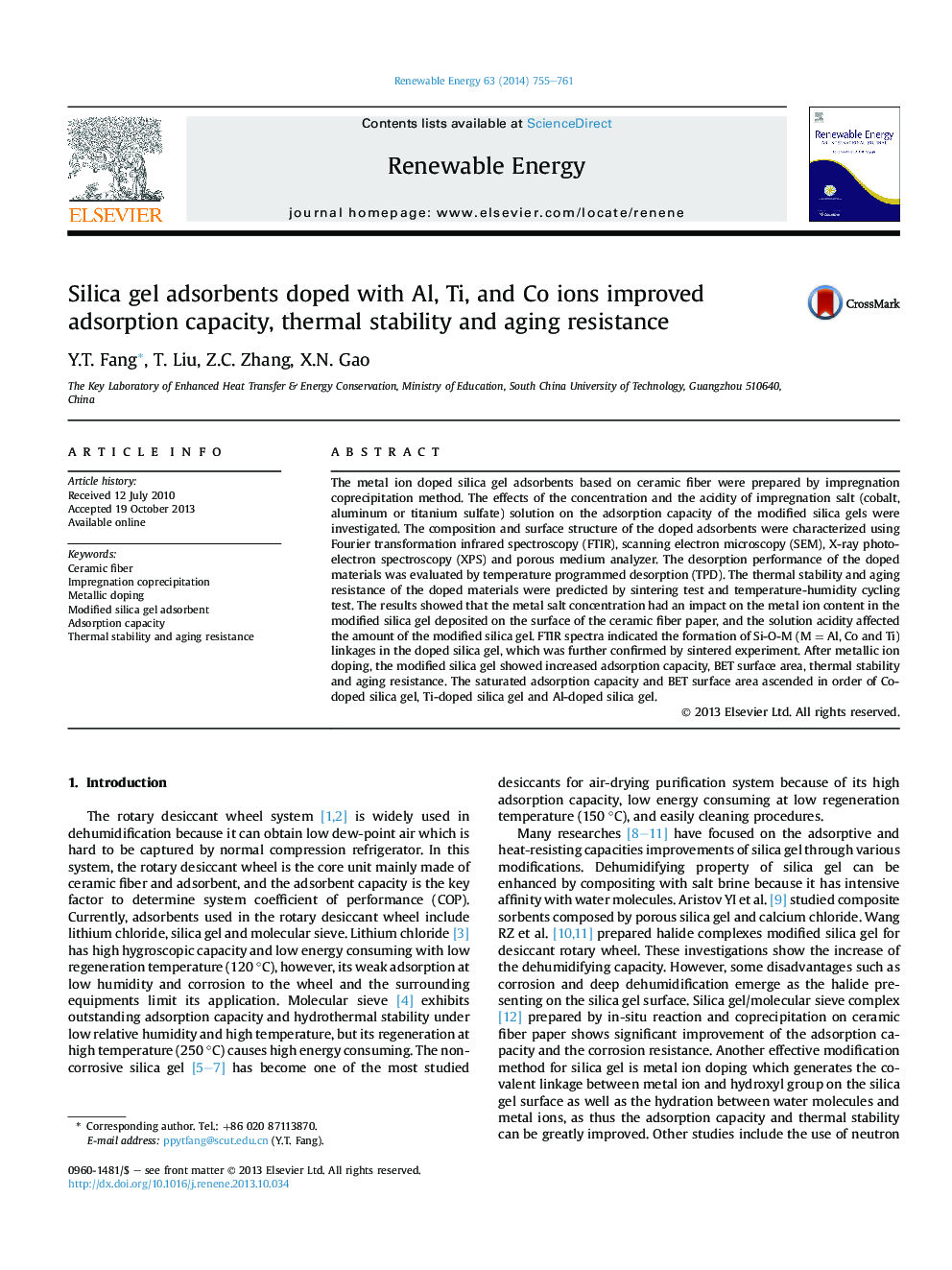| Article ID | Journal | Published Year | Pages | File Type |
|---|---|---|---|---|
| 6769249 | Renewable Energy | 2014 | 7 Pages |
Abstract
The metal ion doped silica gel adsorbents based on ceramic fiber were prepared by impregnation coprecipitation method. The effects of the concentration and the acidity of impregnation salt (cobalt, aluminum or titanium sulfate) solution on the adsorption capacity of the modified silica gels were investigated. The composition and surface structure of the doped adsorbents were characterized using Fourier transformation infrared spectroscopy (FTIR), scanning electron microscopy (SEM), X-ray photoelectron spectroscopy (XPS) and porous medium analyzer. The desorption performance of the doped materials was evaluated by temperature programmed desorption (TPD). The thermal stability and aging resistance of the doped materials were predicted by sintering test and temperature-humidity cycling test. The results showed that the metal salt concentration had an impact on the metal ion content in the modified silica gel deposited on the surface of the ceramic fiber paper, and the solution acidity affected the amount of the modified silica gel. FTIR spectra indicated the formation of Si-O-M (MÂ =Â Al, Co and Ti) linkages in the doped silica gel, which was further confirmed by sintered experiment. After metallic ion doping, the modified silica gel showed increased adsorption capacity, BET surface area, thermal stability and aging resistance. The saturated adsorption capacity and BET surface area ascended in order of Co-doped silica gel, Ti-doped silica gel and Al-doped silica gel.
Keywords
Related Topics
Physical Sciences and Engineering
Energy
Renewable Energy, Sustainability and the Environment
Authors
Y.T. Fang, T. Liu, Z.C. Zhang, X.N. Gao,
